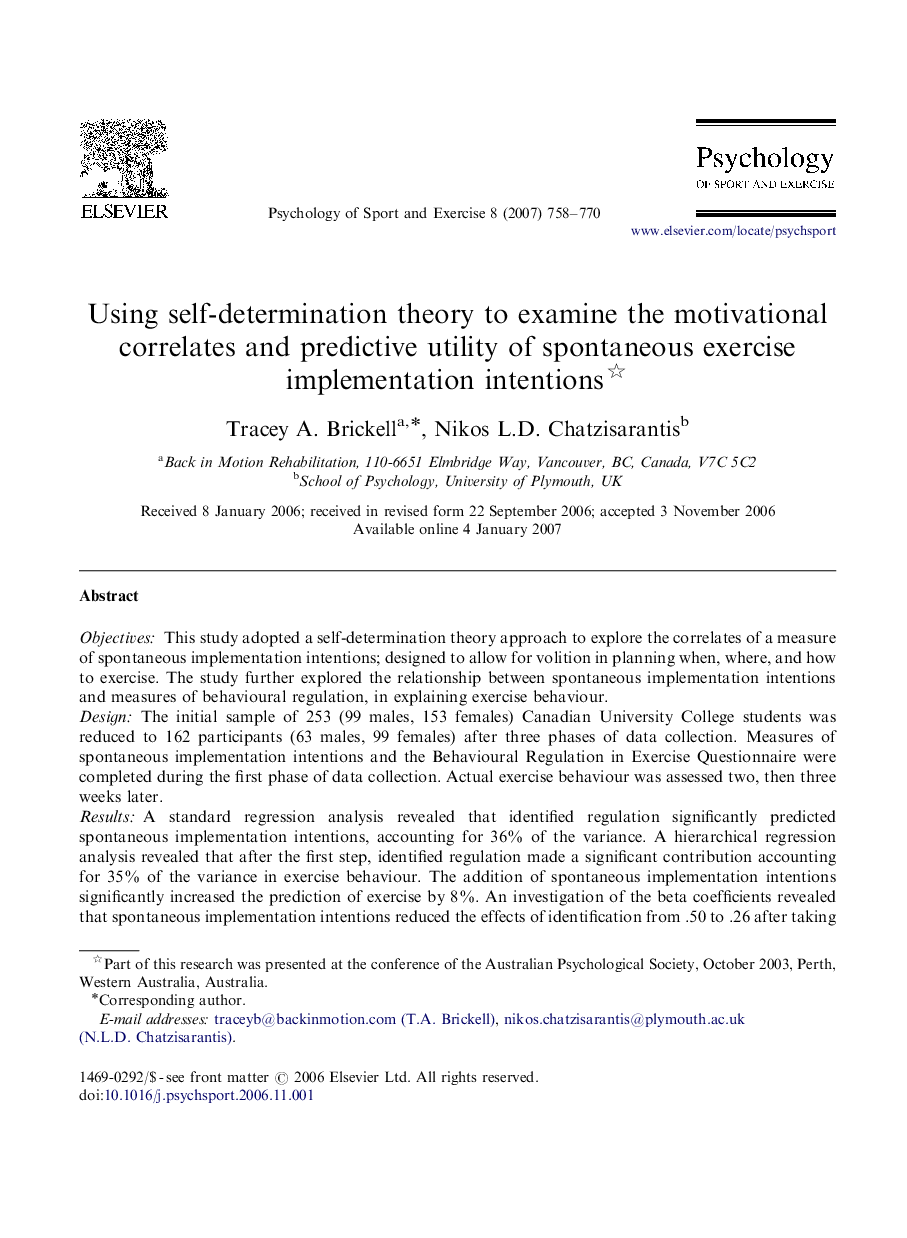| Article ID | Journal | Published Year | Pages | File Type |
|---|---|---|---|---|
| 894885 | Psychology of Sport and Exercise | 2007 | 13 Pages |
ObjectivesThis study adopted a self-determination theory approach to explore the correlates of a measure of spontaneous implementation intentions; designed to allow for volition in planning when, where, and how to exercise. The study further explored the relationship between spontaneous implementation intentions and measures of behavioural regulation, in explaining exercise behaviour.DesignThe initial sample of 253 (99 males, 153 females) Canadian University College students was reduced to 162 participants (63 males, 99 females) after three phases of data collection. Measures of spontaneous implementation intentions and the Behavioural Regulation in Exercise Questionnaire were completed during the first phase of data collection. Actual exercise behaviour was assessed two, then three weeks later.ResultsA standard regression analysis revealed that identified regulation significantly predicted spontaneous implementation intentions, accounting for 36% of the variance. A hierarchical regression analysis revealed that after the first step, identified regulation made a significant contribution accounting for 35% of the variance in exercise behaviour. The addition of spontaneous implementation intentions significantly increased the prediction of exercise by 8%. An investigation of the beta coefficients revealed that spontaneous implementation intentions reduced the effects of identification from .50 to .26 after taking into consideration the effects of spontaneous implementation intentions in the second step of the analysis. The indirect effect of identification on exercise via spontaneous implementation intentions was statistically significant (z=3.88, p<.05).ConclusionsPeople who exercise for more self-determined reasons are more likely to spontaneously form implementation intentions, and because implementation intentions have motivating effects, they might lead to more self-determined behaviour.
